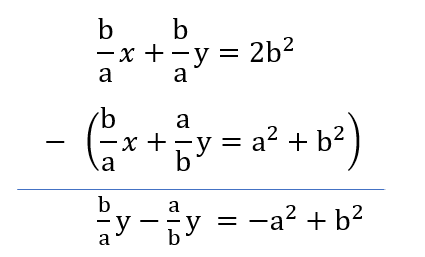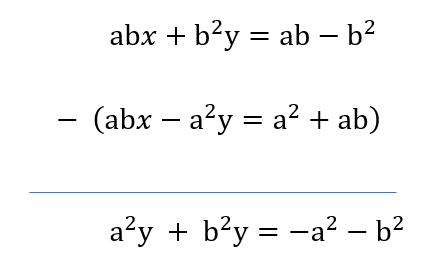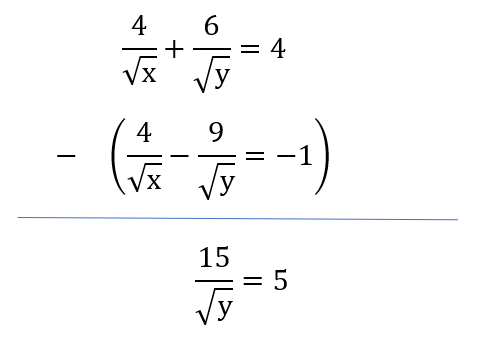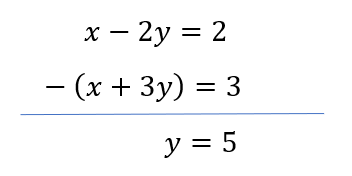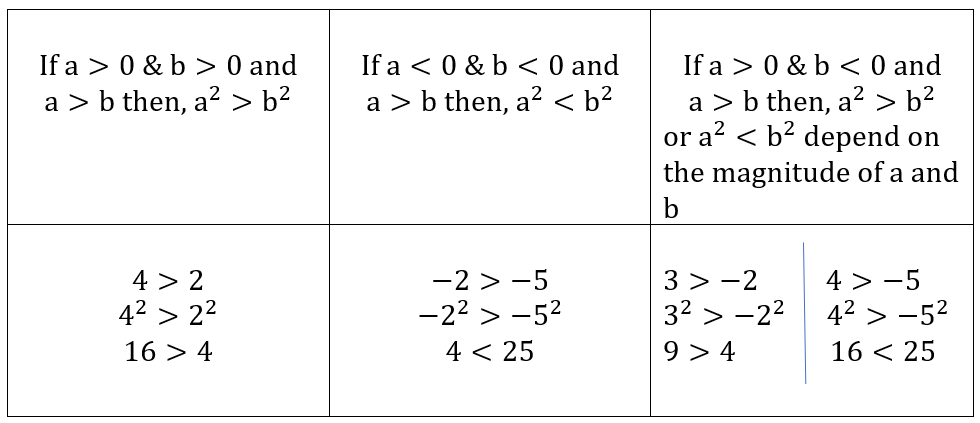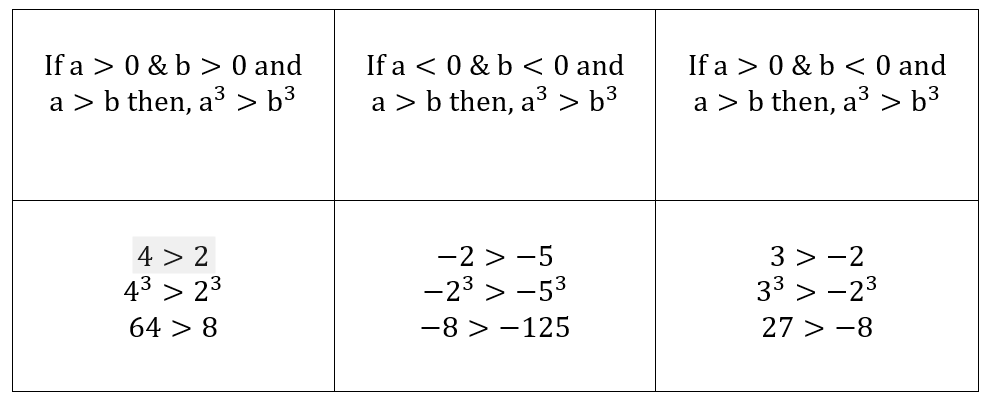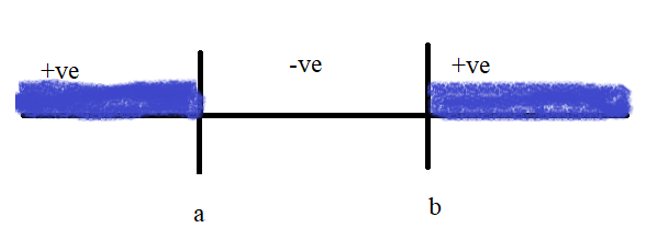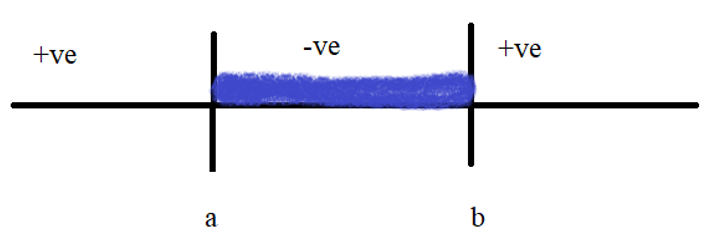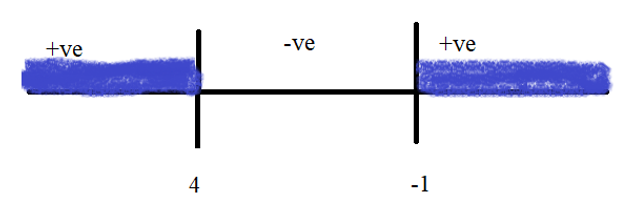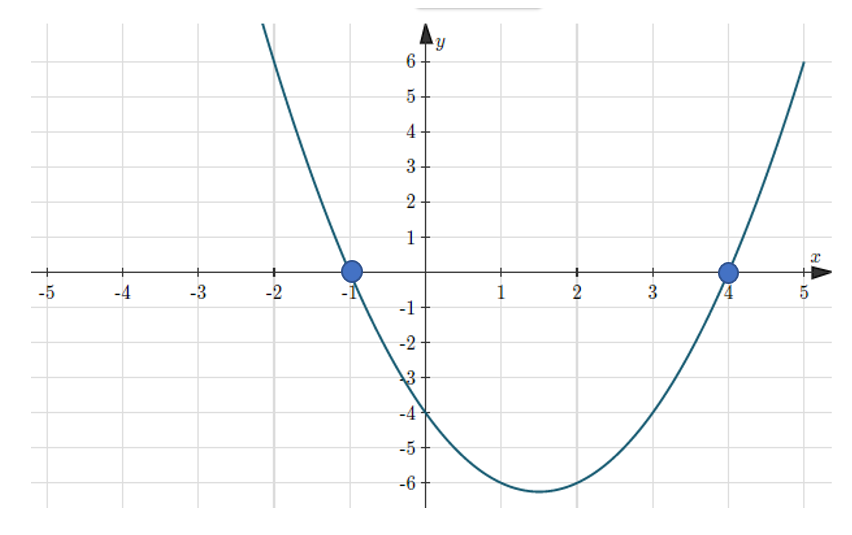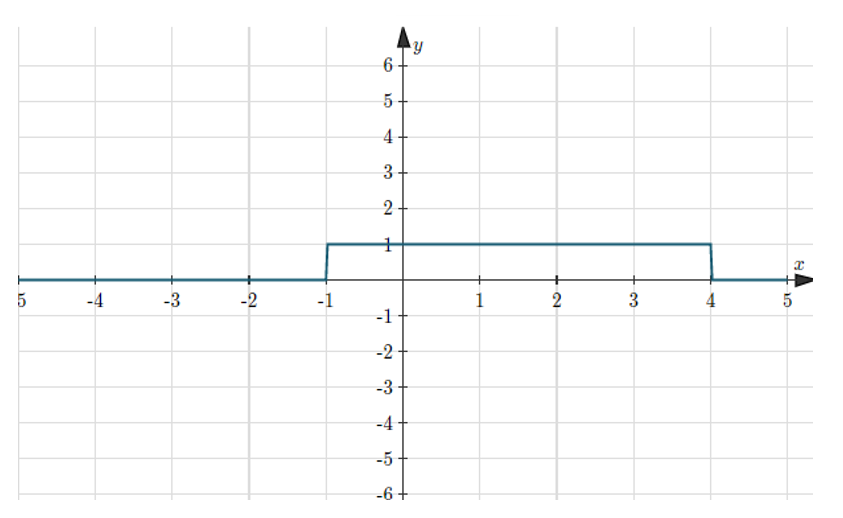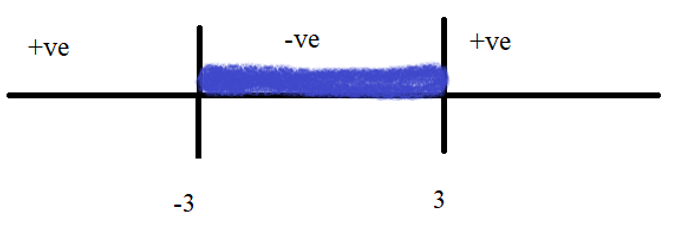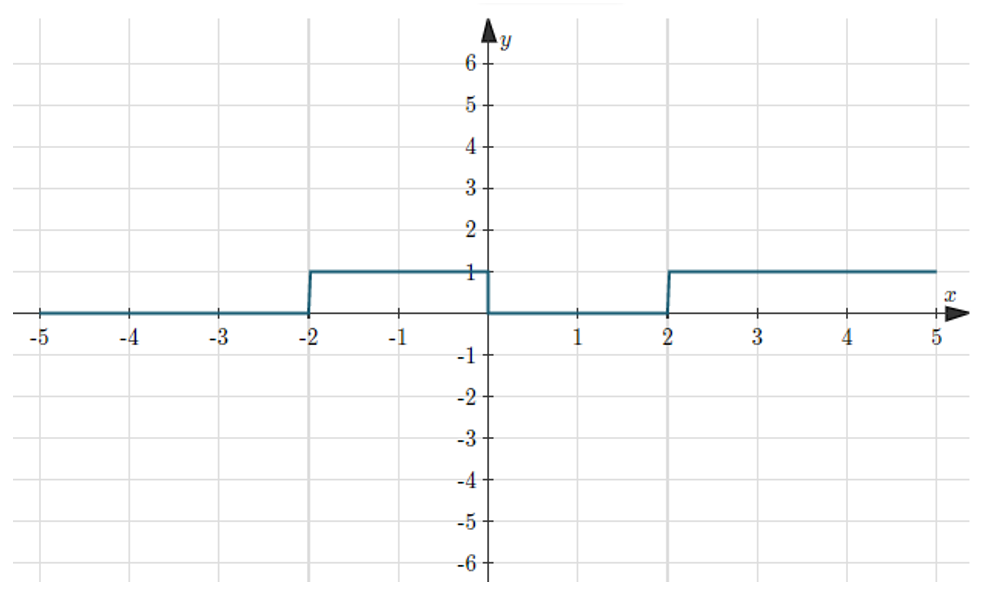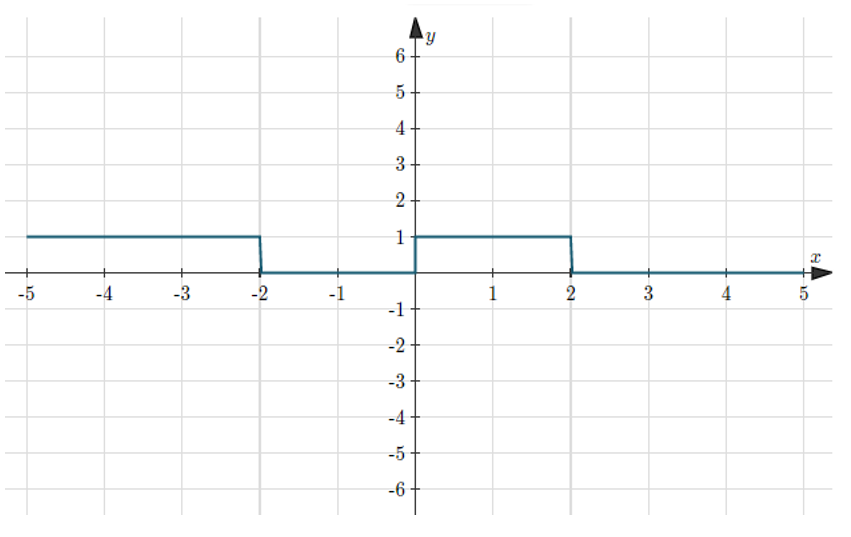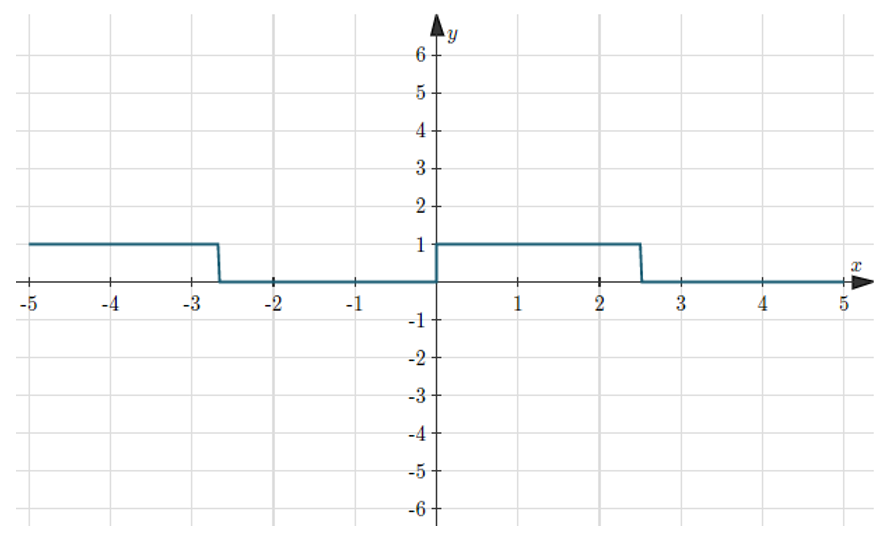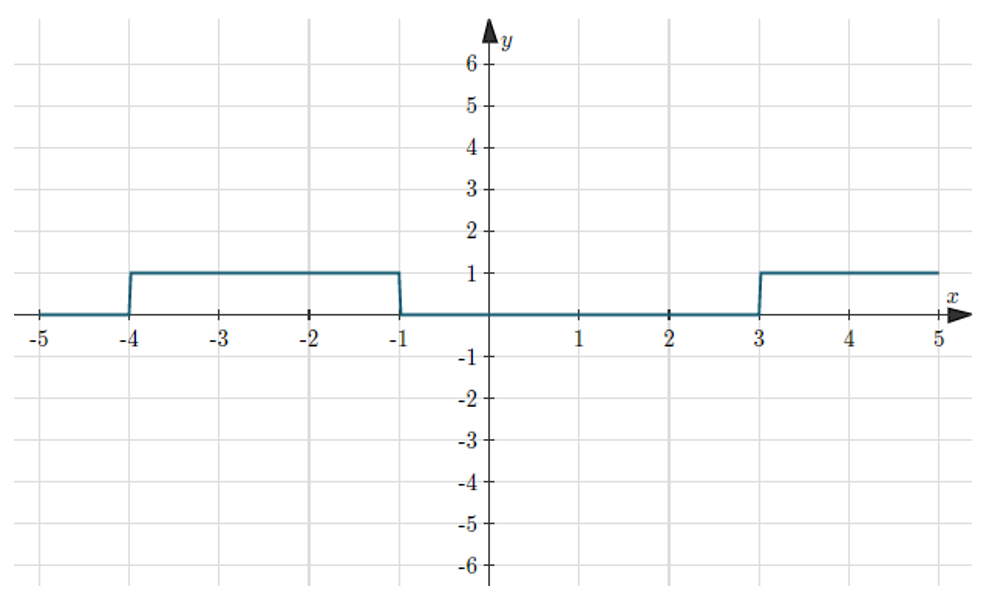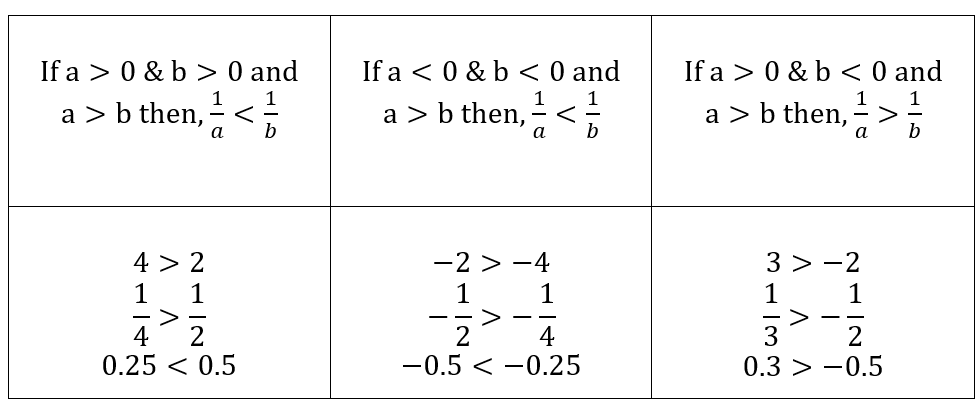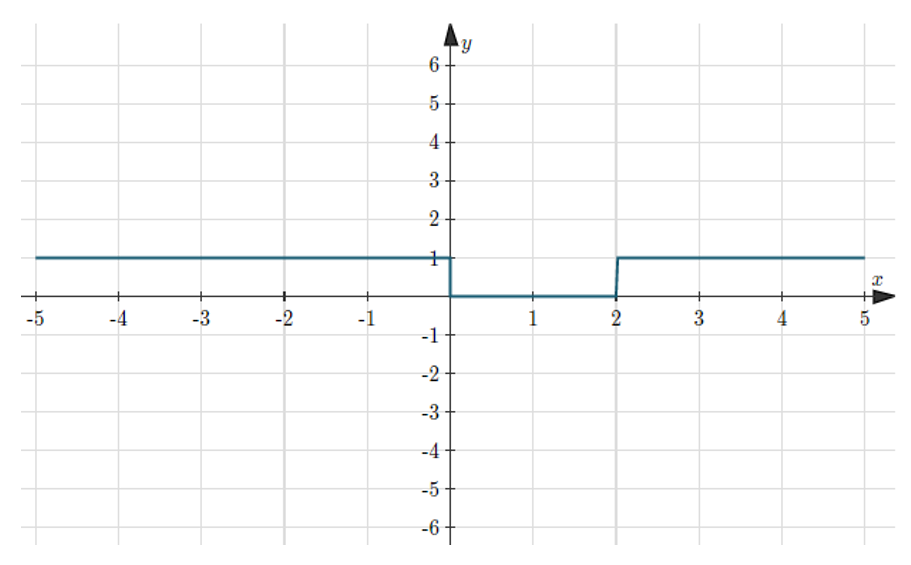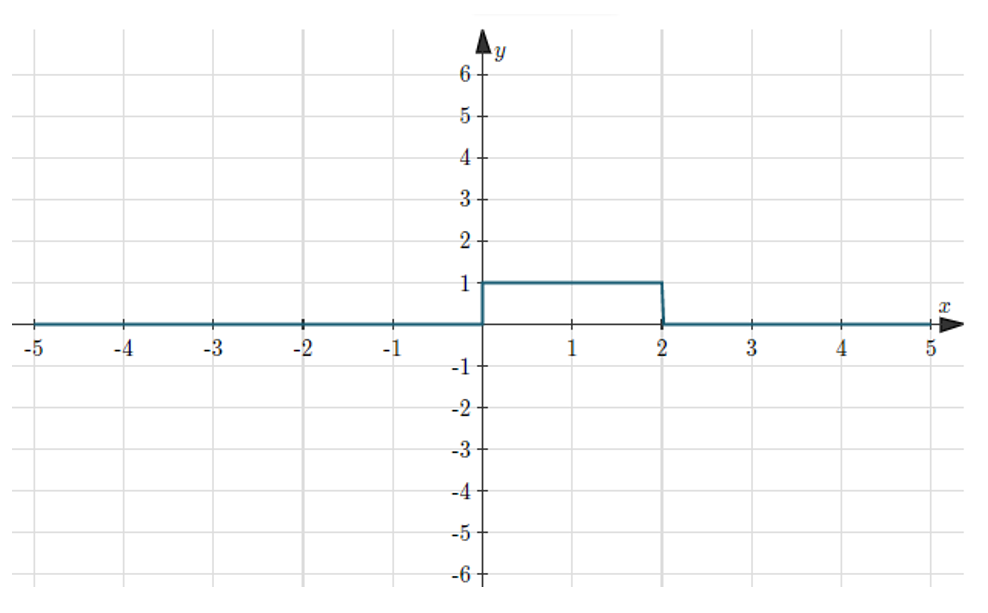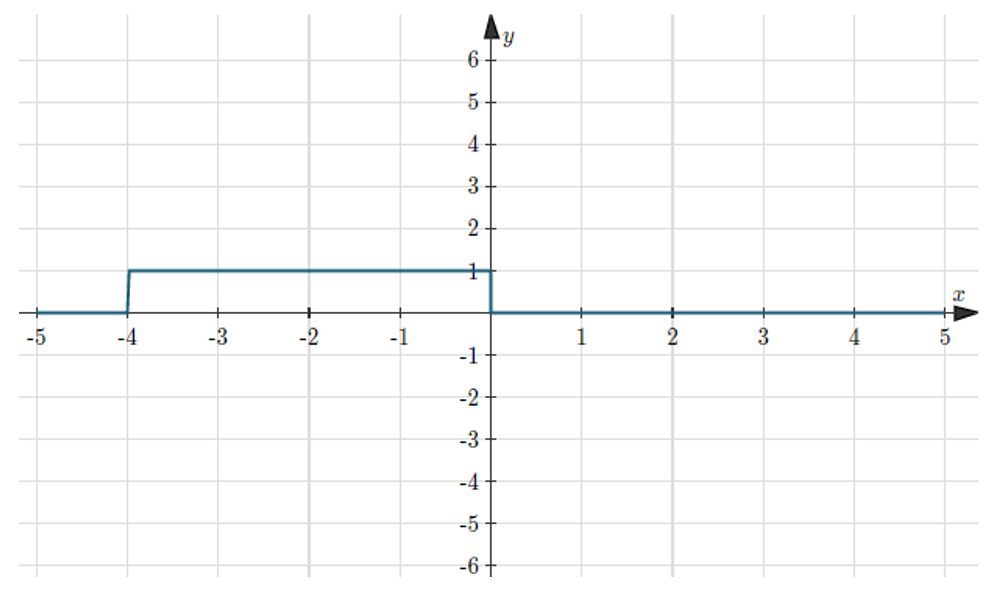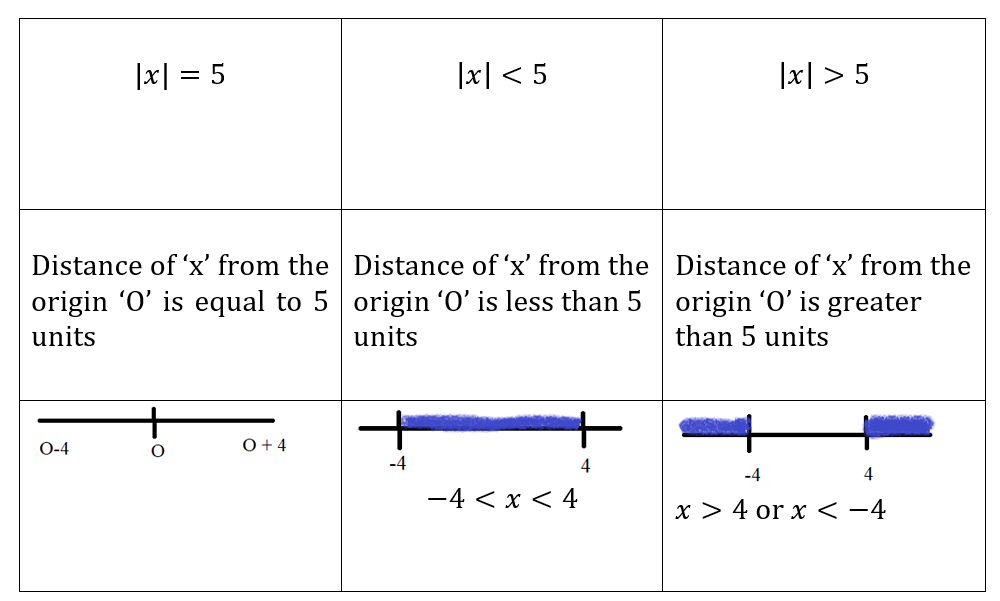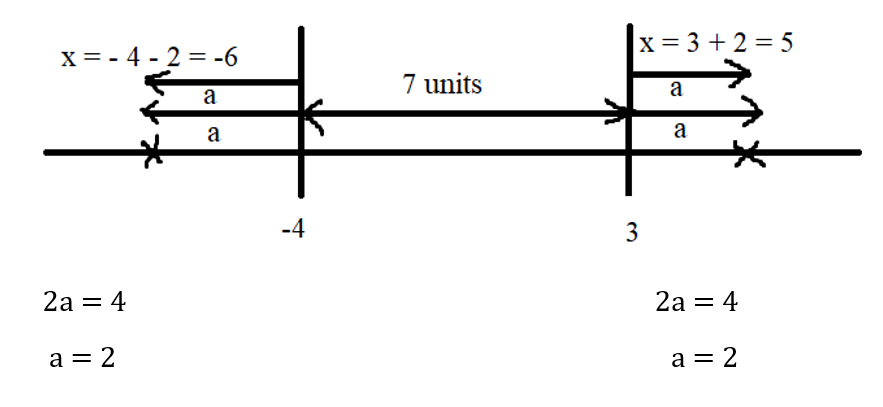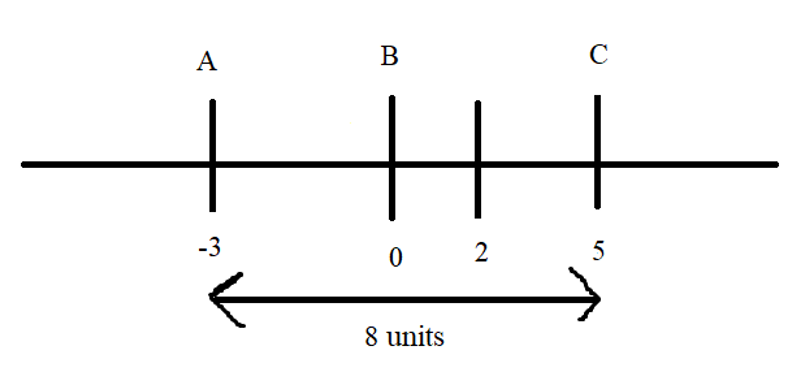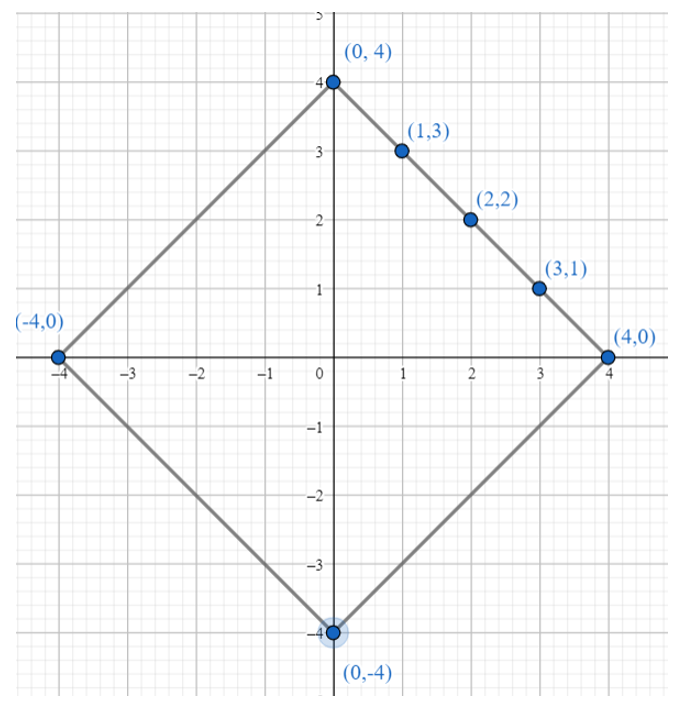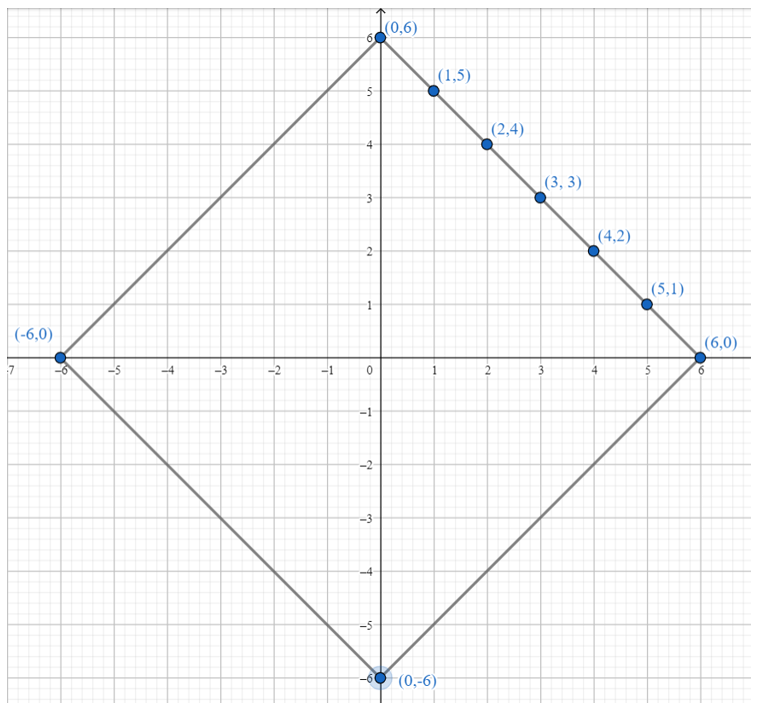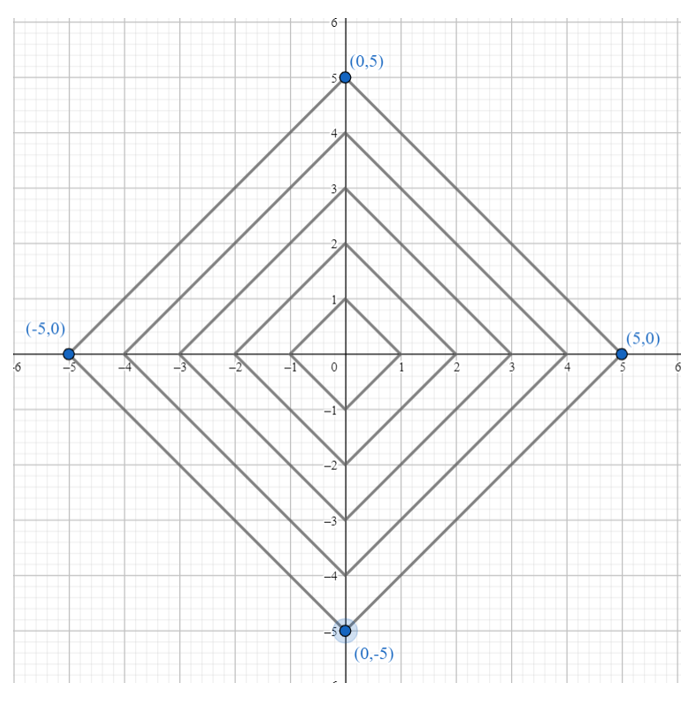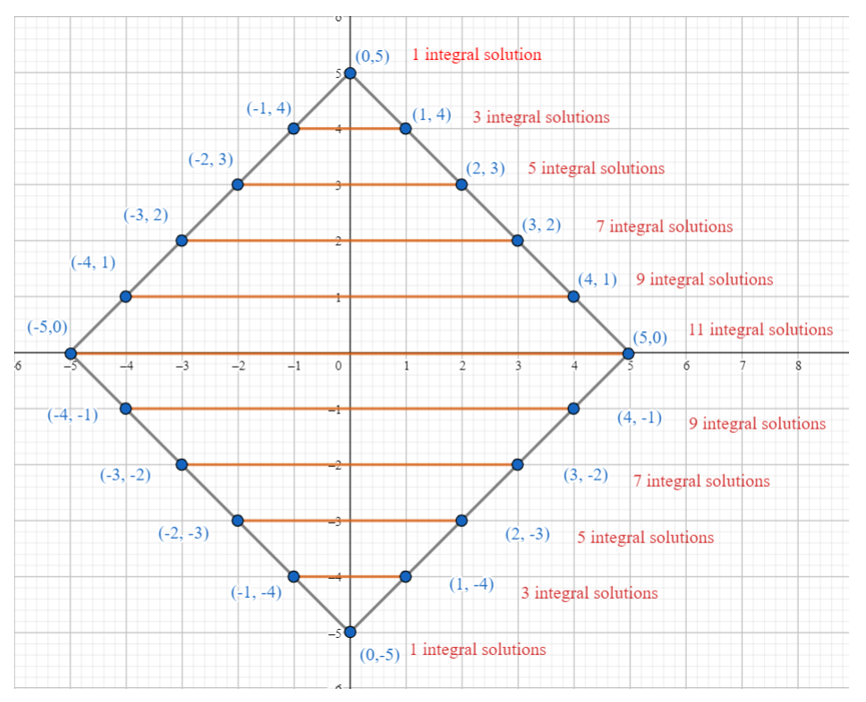1 Time and Work - Trick #157
N/A
A can do a work in ‘m’ days and B can do the same work in ‘n’ days. If they work together and total wages is R, then
}\times&space;R)
}\times&space;R)
Example:
Adam can do a work in 3 days. Wade can do the same work in 2 days.
Both of them finish the work together and get 150. What is the share of Adam?
Solution:
Here, m = 3, n = 2, R = 150



2 Time and Work - Trick #158
N/A
If A, B and C finish the work in m, n and p days respectively and they receive the total wages R, then the ratio of their wages is

Example:
‘A’ alone can do a piece of work in 6 days and ‘B’ alone in 8 days. A and B undertook to do it for $3200. With the help of ‘C’, they completed the work in 3 days. How much is to be paid to C?
Solution:


's\&space;1\&space;day's\&space;work&space;=13)




Sum of the ratios = 4 + 3 + 1 = 8

3 Time and Work - Trick #159
N/A
A and B can do a piece of work in x and y days, respectively. Both begin together but after some days. A leaves the job and B completed the remaining work in a days. After how many days did A leave?
}{x+y}\times&space;x)
Example:
A and B can do a work in 45 days and 40 days respectively. They began the work together but A left after some time and B completed the remainingwork in 23 days. After how many days of the start of the work did A leave?
Solution:
Here, x = 45, y = 40, a = 23
}{(x+y)}\times&space;x)
\times45}{45+40})


4 Time and Work - Trick #160
N/A
If A men and B boys can complete a work in x days, while A, men and B, boys will complete the same work in y days, then
}{\left(xA-yA_1\right)})
5 Profit and Loss: Formula
N/A
\\)

6 Profit and Loss - Trick #161
N/A


Note: Both profit and loss are always calculated on cost price only
Example-1:
A man bought an old typewriter for $1200 and spent $200 on its repair. He sold it for $1680. His profit percent is?
Solution:
\&space;=$\$&space;1400\)

&space;=$\$&space;280)

Example-2:
A merchant buys an article for $27 and sells it at a profit of 10% of the selling price. The selling price of the article is?
Solution:







7 Profit and Loss - Trick #162
N/A
If C.P > S.P., then there will be Loss


Example-1:
Mike had to sell vegetables worth $5,750 for $4,500 due to heavy rainfall.
What is the loss percentage that he has incurred?
Solution:



Example-2:
If a shop–keeper purchases cashew nut at $250 per kg. and sells it at $10 per 50 grams, then he will have?
Solution:


S.P. of 50 gm of cashew nut = $10

8 Profit and Loss - Trick #163
N/A
If an object is sold on r% Profit.
![\mathrm{then\ S.P.\ }=\mathrm{\ C.P\ }\left[\frac{100+\mathrm{\ Profit\ }%}{100}\right]](https://latex.codecogs.com/gif.latex?\mathrm{then\&space;S.P.\&space;}=\mathrm{\&space;C.P\&space;}\left[\frac{100+\mathrm{\&space;Profit\&space;}%}{100}\right])
![C.P=\mathrm{\ S.P.\ }\left[\frac{100}{100+\mathrm{\ Profit\ }%}\right]](https://latex.codecogs.com/gif.latex?C.P=\mathrm{\&space;S.P.\&space;}\left[\frac{100}{100+\mathrm{\&space;Profit\&space;}%}\right])
Similarly, if an object is sold on r% loss, then
![\mathrm{S.P.\ }=\left[\frac{100-Loss%}{100}\right]\mathrm{\ }](https://latex.codecogs.com/gif.latex?\mathrm{S.P.\&space;}=\left[\frac{100-Loss%}{100}\right]\mathrm{\&space;})
![\text { or C.P. }=\text { S.P. }\left[\frac{100}{100-\text { Loss } \%}\right]](https://latex.codecogs.com/gif.latex?\text&space;{&space;or&space;C.P.&space;}=\text&space;{&space;S.P.&space;}\left[\frac{100}{100-\text&space;{&space;Loss&space;}&space;\%}\right])
Example-1:
A man buys a cycle for $1400 and sells it at a loss of 15%. What is the selling price of the cycle?
Solution:



Example-2:
On selling an article for $651, there is a loss of 7%. The cost price of that article is?
Solution:
)
)


9 Profit and Loss - Trick #164
N/A
Successive Profits: If A sells an article to B at a% profit and B sells it to C at b% profit
OR
If a% and b% are two successive profits
%)
If A sells an article to B at a% profit and B sells it to C at b% profit and if C paid $x, then amount paid by
\left(\frac{100}{100+b}\right))
10 Profit and Loss - Trick #165
N/A
If a% and b% are two successive losses then (negative sign shows loss and positive sign shows profit)
&space;\%)
Example:
If a certain company undergoes losses of 10% and 5% in the first two months of the year, then total loss percent for the two months is?
Solution:
&space;\%)
%)
%)


Negative sign shows decrease
11 Profit and Loss - Trick #166
N/A
If a% profit and b% loss occur, simultaneously then overall loss or profit% %)
)
Example:
If a certain company undergoes profit of 20% for March and loss of 10% for April months of the year, then total loss/profit percent for the two months is?
Solution:
By Applying Trick 166,
%)
%)
%)

Therefore 8% profit
Positive sign shows increase
12 Profit and Loss - Trick #167
N/A

%\)
)
Example:
When the price of cloth was reduced by 25%, the quantity of cloth sold increased by 20%. What was the effect on gross receipt of the shop?
Solution:
Required per cent effect
%)
%&space;=&space;-&space;10%&space;(10%&space;decrease))
Negative sign shows decrease
13 Profit and Loss - Trick #168
N/A
If cost price of ‘x’ articles is equal to selling price of ‘y’ articles, then Selling
Price = x, Cost Price = y

Example:
The cost price of 15 articles is same as the selling price of 10 articles. The profit percent is?
Solution:
Here, x = 15, y = 10

\times100)

14 Profit and Loss - Trick #169
N/A
On selling ‘x’ articles the profit or loss is equal to Selling of ‘y’ articles, then


Example:
A cloth merchant on selling 33 metres of cloth obtains a profit equal to the selling price of 11 metres of cloth. The profit percent is?
Solution:
Here, x = 33, y = 11




15 Profit and Loss - Trick #170
N/A
If a man sells two similar objects, one at a loss of x% and another at a gain of x%, then he always incurs loss in this transaction and loss% is 
Example:
A cloth merchant on selling 33 metres of cloth obtains a profit equal to the selling price of 11 metres of cloth. The profit percent is?
Solution:
Here, selling prices are same, Profit-loss percent are same. In such transactions, there is always loss.

16 Profit and Loss - Trick #171
N/A
A man sells his items at a profit/loss of x%. If he had sold it for $R more, he would have gained/lost y%. Then.
}&space;\times&space;100)
‘+’ = When one is profit and other is loss.
‘–’ = When both are either profit or loss.
Example:
A man sold his watch at a loss of 5%. Had he sold it for $56.25 more, he would have gained 10%. What is the cost price of the watch (in $)?
Solution:
Here, x = 5%, R = 56.25, y = 10%
\times100)




If a man purchases ‘a’ items for $x and sells ‘b’ items for $y, then his profit or loss per cent is given by
\times100%)
)
Example:
If a man purchases 5 articles for $120 and sells 10 articles for $80, then his profit or loss percent is?
Solution:
\times100%)
\times100%)
\times100%)
\times100%)


17 Profit and Loss - Trick #172
N/A
If a man purchases ‘a’ items for $x and sells ‘b’ items for $y, then his profit or loss per cent is given by
\times100%)
)
Example:
If a man purchases 5 articles for $120 and sells 10 articles for $80, then his profit or loss percent is?
Solution:
\times100%)
\times100%)
\times100%)
\times100%)


18 Profit and Loss - Trick #173
N/A
If the total cost of ‘a’ articles having equal cost is $x and the total selling price of ‘b’ articles is $y, then in the transaction gain or loss per cent is given by
\times100%)
Where positive value signifies ‘profit’ and negative value signifies ‘loss’
Example:
Ten articles were bought for $8, and sold at 8 for $10. The gain percent is?
Solution:
\times100%)
\times100%)


19 Profit and Loss - Trick #174
N/A
A dishonest shopkeeper sells his goods at C.P. but uses false weight, then his

or

Example-1:
A dishonest fruit vendor sells his goods at cost price but he uses a weight of 900 gm for a kg. weight. His gain per cent is?
Solution:




Example-2:
A dishonest dealer professes to sell his goods at the cost price but uses a false weight of 850 g instead of 1 kg. His gain percent is?
Solution:





20 Profit and Loss - Trick #175
N/A
If A sells an article to B at a profit (loss) of  and B sells the same article to C at a profit (loss) of
and B sells the same article to C at a profit (loss) of  then the cost price of article for C will be given by C.P of article for C
then the cost price of article for C will be given by C.P of article for C
\left(1\pm\frac{r_2}{100}\right))
(Positive and negative sign conventions are used for profit and loss.)
Example:
David sold a Car at 20% gain to Jenny. Jenny sold it to John at 10% profit. If John had to pay $33,000 for the Car, find the cost price of the Car for David?
Solution:

C.P. for John = C.P. for David
\left(1+\frac{r_2}{100}\right))
33000 = C.P. for David
\left(1+\frac{10}{100}\right))
C.P. for David =

= $25,000
21 Profit and Loss - Trick #176
N/A
If a vendor used to sell his articles at x% loss on cost price but uses y grams instead of z grams, then his profit or loss% is
![\left[(100-x)\frac{z}{y}-100\right]%](https://latex.codecogs.com/gif.latex?\left[(100-x)\frac{z}{y}-100\right]%)
(Profit or loss as per positive or negative sign).
22 Boats and Streams: Formula
N/A
If the speed of certain swimmer (or boat or ship) in still water is v km/h and the speed of stream is u km/h, then
(i) The speed of swimmer or boat or ship in the direction of
\&space;=\&space;(u\&space;+\&space;v)\&space;km/h)
(ii) The speed of swimmer or boat or ship in the opposite direction of
\&space;=(v\&space;-&space;u)&space;km/h)
23 Boats and Streams - Trick #177
N/A
If the speed of a swimmer/boat/ship in the direction of stream (downstream) is x km/h and in the opposite direction of stream (upstream) is y km/h, then,
\&space;Speed\&space;of\&space;swimmer/boat/ship\&space;}=\frac{x+y}{2}km/h)
\&space;Speed\&space;of\&space;stream\&space;}=\frac{x-y}{2}km/h)
Example-1:
A boatman rows 1 km in 5 minutes, along the stream and 6 km in 1 hour against the stream. The speed of the stream is?
Solution:


)
)

Example-2:
A man rows 40 km upstream in 8 hours and a distance of 36 km downstream in 6 hours. Then speed of stream is
Solution:



= 0.5 km/hr
Example-3:
A boat travels 24 km upstream in 6 hours and 20 km downstream in 4 hours. Then the speed of boat in still water and the speed of water current are respectively
Solution:






24 Boats and Streams - Trick #178
N/A
Let the speed of boat is x km/h and speed of stream is y km/h. To travel  km downstream and
km downstream and  km upstream, the time taken is ‘t’ hours, then
km upstream, the time taken is ‘t’ hours, then

Example:
A boat covers 12 km upstream and 18 km downstream in 3 hours, while it covers 36 km upstream and 24 km downstream in  hours.
hours.
What is the speed of the current?
Solution:
Let the speed of boat in still water be x kmph and that of current be y kmph, then
)
)
By equation (i) × 3 – equation (ii),

})
From equation (i),



=2\&space;kmph)
25 Boats and Streams - Trick #179
N/A
Let the speed of stream be y km/h and speed of boat be x km/h.
A boat travels equal distance upstream as well as downstream in ‘t’ hours, then
}{2x})
Example:
A boat goes 12 km downstream and comes back to the starting point in 3 hours. If the speed of the current is 3 km/hr, then the speed (in km/hr) of the boat in still water is?
Solution:
Let the speed of boat in still water be x kmph, then

(x-3)}\right)=3)



+1(x-9)=0)
(x+1)=0)

Therefore, Speed can't be negative.
Hence, speed of boat in still water = 9 kmph
26 Boats and Streams - Trick #180
N/A
If a boat travels in downstream and upstream, then,




27 Boats and Streams - Trick #181
N/A
A swimmer or a boat travels a certain distance upstream in  hours, while it takes
hours, while it takes  hours to travel same distance downstream, then,
hours to travel same distance downstream, then,

Example:
A boat goes 6 km an hour in still water, but takes thrice as much time in going the same distance against the current. The speed of the current (in km/hour) is?
Solution:
Here, Speed of boat = 6 km/hr



Speed of current = 3 km/hr
28 Boats and Streams - Trick #182
N/A
If a swimmer takes same time to travel  km downstream and
km downstream and  km upstream, then,
km upstream, then,

29 Boats and Streams - Trick #183
N/A
If a man or a boat covers x km distance in  hours along the direction of stream (downstream) and covers the same distance in
hours along the direction of stream (downstream) and covers the same distance in  hours against the stream i.e., upstream, then
hours against the stream i.e., upstream, then
km/hr)
km/hr)
Example-1:
A boat goes 6 km an hour in still water, but takes thrice as much time in going the same distance against the current. The speed of the current (in km/hour) is?
Solution:
)
)
)
= 1.5 km/hr
Example-2:
A man can row 30 km downstream and return in a total of 8 hours. If the speed of the boat in still water is four times the speed of the current, then the speed of the current is?
Solution:

)
=7km/hr)
30 Boats and Streams - Trick #183
N/A
If the speed of a boat or swimmer in still water is a km/hr and river is flowing with a speed of b km/hr, then average speed in going to a certain place and coming back to starting point is given by
(a-b)}{a}\&space;km/hr)
Example-1:
A man can row 30 km downstream and return in a total of 8 hours. If the speed of the boat in still water is four times the speed of the current, then the speed of the current is?
Solution:
Here, a = 5, b = 1
(a-b)}{a})
(5-1)}{5})


31 Pipe and Cistern - Formula
N/A
There are two types of taps:
Tap to fill the water (efficiency +) (inlet)
Tap to release the water (efficiency –) (outlet)
32 Pipe and Cistern - Trick #184
N/A
Two taps ‘A’ and ‘B’ can fill a tank in ‘x’ hours and ‘y’ hours respectively. If both the taps are opened together, then the time it will take to fill the tank is
hrs)
Example-1:
Two pipes A and B can fill a tank in 20 minutes and 30 minutes respectively. If both pipes are opened together, the time taken to fill the tank is?
Solution:
Here, x = 20, y = 30
Required time
\mathrm{\&space;minutes})
\mathrm{\&space;minutes})

Example-2:
Two pipes can fill a cistern separately in 10 hours and 15 hours. They can together fill the cistern in?
Solution:
Part of the cistern filled by both pipes in 1 hour

The cistern will be filled in 6 hours.
33 Pipe and Cistern - Trick #185
N/A
If x, y, z, ........... all taps are opened together then, the time required to fill/empty the tank will be:

where T, is the required time
Example-1:
Two pipes A and B can fill a cistern in 3 hours and 5 hours respectively.
Pipe C can empty in 2 hours. If all the three pipes are open, in how many hours the cistern will be full?
Solution:
Part of cistern filled by three pipes in an hour


Hence, the cistern will be filled in 30 hours.
Example-2:
Two pipes can fill a tank in 15 hours and 20 hours respectively, while the third can empty it in 30 hours. If all the pipes are opened simultaneously, the empty tank will be filled in?
Solution:
Part of tank filled in 1 hour when all three pipes are opened simultaneously


34 Pipe and Cistern - Trick #186
N/A
Two taps can fill a tank in ‘x’ and ‘y’ hours respectively. If both the taps are opened together and 1st tap is closed before ‘m’ hours of filling the tank, then in how much time the tank will be filled
y}{(x+y)}hrs)
If 2nd tap is closed before ‘m’ hours then
x}{(x+y)}hrs)
35 Pipe and Cistern - Trick #187
N/A
If a pipe fills a tank in ‘x’ hours but it takes ‘t’ more hours to fill it due to leakage in tank. If tank is filled completely, then in how many hours it will be empty? [due to leakage outlet]
}{t})
36 Pipe and Cistern - Trick #188
N/A
Amount of water released or filled = Rate × time.
37 Pipe and Cistern - Trick #189
N/A
Two taps ‘A; and ‘B’ can empty a tank in ‘x’ hours and ‘y’ hours respectively.
If both the taps are opened together, then time taken to empty the tank will be
\mathrm{\&space;hrs})
Example-1:
A tap can empty a tank in one hour. A second tap can empty it in 30 minutes. If both the taps operate simultaneously, how much time is needed to empty the tank?
Solution:
Here, x = 60, y = 30
\mathrm{\&space;minutes})
\mathrm{\&space;minutes})
= 20 minutes
Example-2:
A tap can empty a tank in 30 minutes. A second tap can empty it in 45 minutes. If both the taps operate simultaneously, how much time is needed to empty the tank?
Solution:
Part of tank emptied by both pipes in 1 minute



38 Pipe and Cistern - Trick #190
N/A
A tap ‘A’ can fill a tank in ‘x’ hours and ‘B’ can empty the tank in ‘y’ hours.
Then (a) time taken to fill the tank
:x>y)
\&space;time\&space;taken\&space;to\&space;empty\&space;the\&space;tank)
:y>x)
Example-1:
A cistern can be filled with water by a pipe in 5 hours and it can be emptied by a second pipe in 4 hours. If both the pipes are opened when the cistern is full, the time in which it will be emptied is?
Solution:
Here, x = 5, y = 4
hrs)


Example-2:
A tap can fill a cistern in 8 hours and another tap can empty it in 16 hours.
If both the taps are open, the time (in hours) taken to fill the tank will be?
Solution:
Here, x = 8, y = 16



39 Pipe and Cistern - Trick #191
N/A
Two taps A and B can fill a tank in x hours and y hours respectively. If both the pipes are opened together, then the time after which pipe B should be closed so that the tank is full in t hours
![\mathrm{Required\ time\ }=\left[y\left(1-\frac{t}{x}\right)\right]\mathrm{\ hours}](https://latex.codecogs.com/gif.latex?\mathrm{Required\&space;time\&space;}=\left[y\left(1-\frac{t}{x}\right)\right]\mathrm{\&space;hours})
Example-1:
Two pipes X and Y can fill a cistern in 24 minutes and 32 minutes respectively. If both the pipes are opened together, then after how much time (in minutes) should Y be closed so that the tank is full in 18 minutes?
Solution:
x = 24, y = 32, t = 18 Required time
![=\left[y\left(1-\frac{t}{x}\right)\right]\mathrm{\ minutes}](https://latex.codecogs.com/gif.latex?=\left[y\left(1-\frac{t}{x}\right)\right]\mathrm{\&space;minutes})
![=\left[32\left(1-\frac{18}{24}\right)\right]\mathrm{\ minutes}](https://latex.codecogs.com/gif.latex?=\left[32\left(1-\frac{18}{24}\right)\right]\mathrm{\&space;minutes})
![=\left[32\left(1-\frac{3}{4}\right)\right]](https://latex.codecogs.com/gif.latex?=\left[32\left(1-\frac{3}{4}\right)\right])

Example-2:
A tap takes 36 hours extra to fill a tank due to a leakage equivalent to half of its inflow. The inflow can fill the tank in how many hours?
Solution:
Here, x = 20, y = 30, t = 18
![\mathrm{Required\ time\ }=\left[x\left(1-\frac{t}{y}\right)\right]](https://latex.codecogs.com/gif.latex?\mathrm{Required\&space;time\&space;}=\left[x\left(1-\frac{t}{y}\right)\right])
![[\therefore\ first\ pipe\ is\ closed]](https://latex.codecogs.com/gif.latex?[\therefore\&space;first\&space;pipe\&space;is\&space;closed])
![=\left[20\left(1-\frac{18}{30}\right)\right]](https://latex.codecogs.com/gif.latex?=\left[20\left(1-\frac{18}{30}\right)\right])

40 Pipe and Cistern - Trick #192
N/A
If pipes A & B can fill a tank in time x, B & C in time y and C & A in time z, then the time required/taken to fill the tank by
\&space;(A+B+C)\&space;together\&space;=\frac{2xyz}{xy+yz+zx})
\&space;A\&space;alone\&space;=\frac{2xyz}{xy+yz-zx})
\&space;B\&space;alone\&space;=\frac{2xyz}{yz+zx-xy})
\&space;C\&space;alone\&space;=\frac{2xyz}{zx+xy-yz})
41 Discount - Trick #193
N/A
If Marked Price = (MP) Selling Price = (SP)
Then, Discount = MP – SP and


Note: Any kind of Discount is calculated only on marked price and not on selling price or cost price.
Example-1:
An article, which is marked $650, is sold for $572. The discount given is?
Solution:
Here, M.P. = $650
S.P. = $572




Example-2:
If a dining table with marked price $6,000 was sold to a customer for $5,500, then the rate of discount allowed on the table is?
Solution:
M.P. = $6000
S.P. = $5500




42 Discount - Trick #194
N/A
If article is sold on D% discount, then
}{100})

Example-1:
A washing machine is sold at a discount of 30%. If a man buys it for $6,580, its list price is?
Solution:





Example-2:
A discount of 14% on the marked price of an article is allowed and then the article is sold for $387. The marked price of the article is?
Solution:
Here, D = 14%, S.P. = $387, M.P. =?




43 Discount - Trick #195
N/A
When successive Discounts  so on, are given then
so on, are given then
\left(\frac{100-D_{2}}{100}\right)\left(\frac{100-D_{3}}{100}\right))
Example-1:
The marked price of an article is $500. It is sold at successive discounts of 20% and 10%. The selling price of the article (in rupees) is?
Solution:



\left(\frac{100-D_2}{100}\right))
\left(\frac{100-10}{100}\right))


Example-2:
An item is marked for $240 for sale. If two successive discounts of 10% and 5% are allowed on the sale price, the selling price of the article will be?
Solution:
Here, M.P. = $240,

\left(\frac{100-D_2}{100}\right))
\left(\frac{100-5}{100}\right))
44 Discount - Trick #196
N/A
If  are successive discounts, then equivalent discount/overall discount is (in percentage)
are successive discounts, then equivalent discount/overall discount is (in percentage)
![100-\left[\left(\frac{100-D_1}{100}\right)\left(\frac{100-D_2}{100}\right)\left(\frac{100-D_3}{100}\right)\times100\right]](https://latex.codecogs.com/gif.latex?100-\left[\left(\frac{100-D_1}{100}\right)\left(\frac{100-D_2}{100}\right)\left(\frac{100-D_3}{100}\right)\times100\right])
Example-1:
A single discount equivalent to the successive discounts of 10%, 20% and 25% is?
Solution:
Single equivalent discount
![=100-\left[\left(\frac{100-D_1}{100}\right)\left(\frac{100-D_2}{100}\right)\left(\frac{100-D_3}{100}\right)\times100\right]](https://latex.codecogs.com/gif.latex?=100-\left[\left(\frac{100-D_1}{100}\right)\left(\frac{100-D_2}{100}\right)\left(\frac{100-D_3}{100}\right)\times100\right])
![=100-\left[\left(\frac{100-10}{100}\right)\left(\frac{100-20}{100}\right)\left(\frac{100-25}{100}\right)\times100\right]](https://latex.codecogs.com/gif.latex?=100-\left[\left(\frac{100-10}{100}\right)\left(\frac{100-20}{100}\right)\left(\frac{100-25}{100}\right)\times100\right])



Example-2:
The single discount equal to three consecutive discounts of 10%, 12% and 5% is?
Solution:


Single equivalent discount
![=100-\left[\left(\frac{100-D_1}{100}\right)\left(\frac{100-D_2}{100}\right)\left(\frac{100-D_3}{100}\right)\times100\right]](https://latex.codecogs.com/gif.latex?=100-\left[\left(\frac{100-D_1}{100}\right)\left(\frac{100-D_2}{100}\right)\left(\frac{100-D_3}{100}\right)\times100\right])
![=100-\left[\left(\frac{100-10}{100}\right)\left(\frac{100-12}{100}\right)\left(\frac{100-5}{100}\right)\times100\right]](https://latex.codecogs.com/gif.latex?=100-\left[\left(\frac{100-10}{100}\right)\left(\frac{100-12}{100}\right)\left(\frac{100-5}{100}\right)\times100\right])



45 Discount - Trick #197
N/A
When two successive discounts are given, then overall discount is %)
Example-1:
Two successive discounts of 5%, 10% are given for an article costing $850.
Present cost of the article is?
Solution:
Single equivalent discount
%=14.5%)
 Cost of article after discount
Cost of article after discount
}{100})

Example-2:
Successive discounts of 10% and 30% are equivalent to a single discount of?
Solution:

46 Discount - Trick #198
N/A
If r% of profit or loss occur after giving D% discount on marked price, then

(Positive sign for profit and negative for loss)
Example-1:
Jenny allows 4% discount on the marked price of her goods and still earns a profit of 20%. What is the cost price of a TV if its marked price is $850?
Solution:
Here r = 20%, D = 4%, M.P. = $850, C.P. =?




Example-2:
The marked price of an article is $500. A shopkeeper gives a discount of 5% and still makes a profit of 25%. The cost price of the article is.
Solution:
Here, R = 25%, D = 5%, M.P. = 500, C.P. =?




47 Discount - Trick #199
N/A
‘y’ articles (quantity/number) are given free on purchasing ‘x’ articles.
Then,

Example-1:
If a Man purchases 8 articles, he gets 2 articles free of cost. Then find the discount percentage the man gets from his purchase?
Solution:

Here x = 8 and y = 2



48 Discount - Trick #200
N/A
A tradesman marks his goods r% above his cost price. If he allows his customers a discount of  on the marked price. Then is profit or loss percent is
on the marked price. Then is profit or loss percent is
}{100}-r_1)
(Positive sign signifies profit and negative sign signifies loss).
Example-1:
A tradesman marks his goods 10% above his cost price. If he allows his customers 10% discount on the marked price, how much profit or loss does he makes, if any?
Solution:


}{100}-r_1)
}{100}-10)

)

Example-2:
A tradesman marks his goods at 20% above the cost price. He allows his customers a discount of 8% on marked price. Find out his profit per cent.
Solution:

}{100}-r_1)
}{100}-8)



49 Discount - Trick #201
N/A
The marked price of an article is fixed in such a way that after allowing a discount of r% a profit of R% is obtained. Then the marked price of the article is
%\mathrm{\&space;more\&space;than\&space;its\&space;cost\&space;price.})
Example-1:
What price should a shopkeeper mark on an article costing him $200 to gain 35% after allowing a discount of 25%?
Solution:
Here, r = 25%, R = 35%, C.P. = $200
%)
\times100%)




Example-2:
What price should a shopkeeper mark on an article costing him $200 to gain 35% after allowing a discount of 25%?
Solution:
Here, r = 10% R = 20%
}{100-r}\times100%)



50 Percentages - Formula
N/A
Percentage refers to “Per hundred” i.e., 8% means 8 out of hundred or 8/100. Percentage is denoted by ‘%’.

51 Percentages - Trick #202
N/A


Example:
A reduction in the price of apples enables a person to purchase 3 apples for 1 instead of 1.25. What is the % of reduction in price (approximately)
Solution:
Percentage decrease

52 Percentages - Trick #203
N/A


Example:
The price of a commodity rises from $6 per kg to $7.50 per kg. If the expenditure cannot increase, the percentage of reduction in consumption is?
Solution:
Percentage increase

Percentage decrease in consumption

53 Percentages - Trick #204
N/A
If an amount is increased by a% and then it is reduced by a% again, then percentage change will be a decrease of

Example:
The salary of a person is decreased by 25% and then the decreased salary is increased by 25%. His new salary in comparison with his original salary?
Solution:
Percentage decrease
^2}{100})


54 Percentages - Trick #205
N/A
If a number is increased by a% and then it is decreased by b%, then resultant change in percentage will be
%)
(Negative for decrease, Positive for increase)
Example:
Water tax is increased by 20% but its consumption is decreased by 20%.
Then the increase or decrease in the expenditure of the money is?
Solution:
Percentage effect
%)

55 Percentages - Trick #206
N/A
If a number is decreased by a% and then it is increased by b%, then net increase or decrease per cent is
%)
(Negative for decrease, Positive for increase)
Example:
The price of an article is reduced by 25% but the daily sale of the article is increased by 30%. The net effect on the daily sale receipts is?
Solution:
Required change
%)
%)
=-2.5%)

56 Percentages - Trick #207
N/A
If a number is first decreased by a% and then by b%, then net decrease percent is
%)
)
Example:
The price of an article was decreased by 10% and again reduced by 10%. By what per cent should the price have been reduced once, in order to produce the same effect as these two successive reductions?
Solution:
A single equivalent reduction to reduction series of x%, y%
%)
%)
%=19%)
57 Percentages - Trick #208
N/A
If a number is first increased by a% and then again increased by b%, then total increase per cent is
%)
Example:
Two successive price increases of 10% and 10% of an article are equivalent to a single price increase of?
Solution:
Single equivalent percentage increase in price
%=21%)
58 Percentages - Trick #209
N/A
If the cost of an article is increased by A%, then how much to decrease the consumption of article, so that expenditure remains same is given by
}\times100\right)%)
Example:
If x is 10% more than y, then by what per cent is y less than x?
Solution:
Required per cent decrease



59 Percentages - Trick #210
N/A
If the cost of an article is decreased by A%, then the increase inconsumption of article to maintain the expenditure will be?
}\times100\right)%\mathrm{\&space;(increase)})
Example:
If x is less than y by 25% then y exceeds x by?
Solution:
}\times100%)


60 Percentages - Trick #211
N/A
If the length of a rectangle is increased by a% and breadth is increased by b%, then the area of rectangle will increase by
%)
Note: If a side is increased, take positive sign and if it is decreased, take negative sign. It is applied for two dimensional figures.
61 Percentages - Trick #212
N/A
If the side of a square is increased by a% then, its area will increase by
%=\left(a+a+\frac{a\cdot&space;a}{100}\right)%)
The above formula is also implemented for circle where radius is used as side. This formula is used for two dimensional geometrical figures having both length and breadth equal.
62 Percentages - Trick #213
N/A
If the side of a square is decreased by a%, then the area of square will decrease by
%)
This formula is also applicable for circles. where decrease % of radius is given.
63 Percentages - Trick #214
N/A
If the length, breadth and height of a cuboid are increased by a%, b% and c% respectively, then,
![Increase%\ in\ volume=\left[a+b+c+\frac{ab+bc+ca}{100}+\frac{abc}{(100)^2}\right]%](https://latex.codecogs.com/gif.latex?Increase%\&space;in\&space;volume=\left[a+b+c+\frac{ab+bc+ca}{100}+\frac{abc}{(100)^2}\right]%)
64 Percentages - Trick #215
N/A
If every side of cube is increased by a%, then increase % in volume
^2}\right)%)
This formula will also be used in calculating increase in volume of sphere. where increase in radius is given.
Example:
If each side of a cube is increased by 10% the volume of the cube will increase by?
Solution:
Increase % in volume
^2}\right)%)
=33.1%)
65 Percentages - Trick #216
N/A
If a% of a certain sum is taken by 1st man and b% of remaining sum is taken by 2nd man and finally c% of remaining sum is taken by 3rd man, then if 'x' rupee is the remaining amount then,
(100-b)(100-c)})
66 Percentages - Trick #217
N/A
If an amount is increased by a% and then again increased by b% and finally increased by c%, So, that resultant amount is ‘x’ rupees, then,
(100+b)(100+c)})
67 Percentages - Trick #218
N/A
If the population/cost of a certain town/ article, is P and annual increment rate is r%, then
\&space;After\&space;\prime\&space;t\&space;\prime\&space;years\&space;population/cost\&space;=P\left(1+\frac{r}{100}\right)^t)
\&space;Before\&space;\prime&space;t\prime\&space;years\&space;population/cost\&space;=\frac{P}{\left(1+\frac{r}{100}\right)^t})
Example:
The present population of a city is 180000. If it increases at the rate of 10% per annum, its population after 2 years will be?
Solution:
Required population after two years
^2)


68 Percentages - Trick #219
N/A
If the population/cost of a town/article is P and it decreases/reduces at the rate of r% annually, then,
\&space;After\&space;\prime\&space;t\&space;\prime\&space;years\&space;population/cost\&space;=P\left(1-\frac{r}{100}\right)^t)
\&space;Before\&space;\prime&space;t\prime\&space;years\&space;population/cost\&space;=\frac{P}{\left(1-\frac{r}{100}\right)^t})
Example:
The value of a commodity depreciates 10% annually. If it was purchased 3 years ago, and its present value is $5,832, what was its purchase price?
Solution:
Let the original price of the article be $x.
According to the question,
^3)
^3)


69 Percentages - Trick #220
N/A
On increasing/decreasing the cost of a certain article by x%, a person can buy ‘a’ kg article less/more in ‘y’ rupees, then
\)
a})
[Negative sign when decreasing and positive sign when increasing]
70 Percentages - Trick #221
N/A
If a person saves ‘R’ rupees after spending x% on food, y% on cloth and z% on entertainment of his income then,
}\times&space;R)
Example:
A person gave 20% of his income to his elder son, 30% of the remaining to the younger son and 10% of the balance, he donated to a trust. He is left with $10080. His income was?
Solution:
Here, R = $10080
x = 20%,
y = 30%
and z = 10%
Monthly income
}\times10080)



71 Percentages - Trick #222
N/A
The amount of acid/milk is x% in ‘M’ litre mixture. How much water should be mixed in it so that percentage amount of acid/milk would be y%?
}{y})
Example:
8% of the voters in an election did not cast their votes. In this election, there were only two candidates. The winner by obtaining 48% of the total votes defeated his contestant by 1100 votes. The total number of voters in the election was?
Solution:
Here, x = 1100, A = 48
Total number of votes





72 Percentages - Trick #223
N/A
An examinee scored m% marks in an exam, and failed by p marks. In the same examination another examinee obtained n% marks and passed with q more marks than minimum, then
}\times(p+q))
Example:
A candidate secured 30% marks in an examination and failed by 6 marks.
Another secured 40% marks and got 6 marks more than the bare minimum to pass. The maximum marks are?
Solution:
Here, m = 30%, n = 40%, p = 6, q = 6.
Maximum Marks
}\times(p+q))
}\times(6+6))

73 Percentages - Trick #224
N/A
In an examination, a% candidates failed in Maths and b% candidates failed in English. If c% candidate failed in both the subjects, then,
\&space;Passed\&space;candidates\&space;in\&space;both\&space;the\&space;subjects\&space;=\&space;100\&space;-&space;(a&space;+&space;b&space;-&space;c)%)
&space;Percentage\&space;of\&space;candidates\&space;who\&space;failed\&space;in\&space;either\&space;subject\&space;=\&space;(a&space;+&space;b&space;-&space;c)%)
Example:
In an examination 34% failed in Mathematics and 42% failed in English. If 20% failed in both the subjects, the percentage of students who passed in both subjects was?
Solution:
a = 34%, b = 42%, c = 20%
Passed candidates in both the subjects
= 100 – (a + b – c)
= 100 – (34 + 42 – 20)
= 100 – 56 = 44%
74 Percentages - Trick #225
N/A
In a certain examination passing marks is a%. If any candidate obtains ‘b’ marks and fails by ‘c’ marks, then,
}{a})
Example:
A student has to secure minimum 35% marks to pass in an examination. If he gets 200 marks and fails by 10 marks, then the maximum marks are
Solution:
a = 35%, b = 200, c = 10
Maximum Marks
}{a})
}{35})

75 Percentages - Trick #226
N/A
In a certain examination, ‘B’ boys and ‘G’ girls participated. b% of boys and g% of girls passed the examination, then,
Percentage of passed students of the total students = %)
Example:
In an examination, there were 1000 boys and 800 girls. 60% of the boys and 50% of the girls passed. Find the percent of the candidates failed?
Solution:
Percentage of passed students
%)





76 Percentages - Trick #227
N/A
If a candidate got A% votes in a poll and he won or defeated by ‘x’ votes, then, what was the total no. of votes which was casted in poll?
})
Example:
In an election there were only two candidates. One of the candidates secured 40% of votes and is defeated by the other candidate by 298 votes.
The total number of votes polled is?
Solution:
Total number of votes

77 Percentages - Trick #228
N/A
If a number ‘a’ is increased or decreased by b%, then the new number will be
\times&space;a)
78 Percentages - Trick #229
N/A
If the present population of a town is P and the population increases or decreases at rate of  in first, second and third year respectively, then
in first, second and third year respectively, then
The population of town after 3 years =
\left(1\pm\frac{R_2}{100}\right)\left(1\pm\frac{R_3}{100}\right))
‘+’ is used when population increases
‘–’ is used when population decreases.
The above formula may be extended for n number of years.
\left(1\pm\frac{R_2}{100}\right)\ldots\ldots\ldots\ldots\ldots\left(1\pm\frac{R_n}{100}\right))
Example:
The value of a machine is 6,250. It decreases by 10% during the first year, 20% during the second year and 30% during the third year. What will be the value of the machine after 3 years?
Solution:
Required price of the machine
\left(1-\frac{20}{100}\right)\left(1-\frac{30}{100}\right))


79 Percentages - Trick #230
N/A
If two numbers are respectively x% and y% less than the third number, first number as a percentage of second is

80 Percentages - Trick #231
N/A
If two numbers are respectively x% and y% more than a third number the first as percentage of second is

Example:
Two numbers are respectively 10% and 25% more than a third number.
What per cent is the first of the second?
Solution:
If two numbers are respectively x% and y% more than a third number, the first as a per cent of second is


81 Percentages - Trick #232
N/A
If the price of an article is reduced by a% and buyer gets c kg more for some $ b, the new price per kg of article

Example-1:
The Government reduced the price of sugar by 10 per cent. By this a consumer can buy 6.2 kg more sugar for $837. The reduced price per kg of sugar is
Solution:
Reduced price per kg


Example-2:
A reduction of 10% in the price of sugar enables a housewife to buy 6.2 kg more for 1116. The reduced price per kg is?
Solution:





